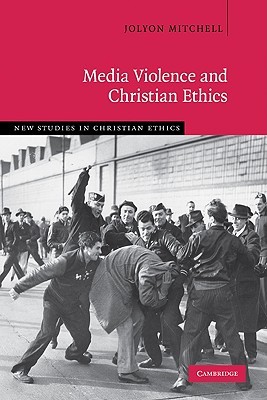
- We will send in 10–14 business days.
- Author: Jolyon Mitchell
- Publisher: Cambridge University Press
- ISBN-10: 0521011868
- ISBN-13: 9780521011860
- Format: 15.2 x 22.9 x 2 cm, softcover
- Language: English
- SAVE -10% with code: EXTRA
Reviews
Description
How can audiences interact creatively, wisely and peaceably with the many different forms of violence found throughout today's media? Suicide attacks, graphic executions and the horrors of war appear in news reports, films, websites, and even on mobile phones. One approach towards media violence is to attempt to protect viewers; another is to criticise journalists, editors, film-makers and their stories. In this book Jolyon Mitchell highlights Christianity's ambiguous relationship with media violence. He goes beyond debates about the effects of watching mediated violence to examine how audiences, producers and critics interact with news images, films, video-games and advertising. He argues that practices such as hospitality, friendship, witness and worship can provide the context where both spectacular and hidden violence can be remembered and reframed. This can help audiences to imagine how their own identities and communities can be based not upon violence, but upon a more lasting foundation of peace.
EXTRA 10 % discount with code: EXTRA
The promotion ends in 16d.01:06:36
The discount code is valid when purchasing from 10 €. Discounts do not stack.
- Author: Jolyon Mitchell
- Publisher: Cambridge University Press
- ISBN-10: 0521011868
- ISBN-13: 9780521011860
- Format: 15.2 x 22.9 x 2 cm, softcover
- Language: English English
How can audiences interact creatively, wisely and peaceably with the many different forms of violence found throughout today's media? Suicide attacks, graphic executions and the horrors of war appear in news reports, films, websites, and even on mobile phones. One approach towards media violence is to attempt to protect viewers; another is to criticise journalists, editors, film-makers and their stories. In this book Jolyon Mitchell highlights Christianity's ambiguous relationship with media violence. He goes beyond debates about the effects of watching mediated violence to examine how audiences, producers and critics interact with news images, films, video-games and advertising. He argues that practices such as hospitality, friendship, witness and worship can provide the context where both spectacular and hidden violence can be remembered and reframed. This can help audiences to imagine how their own identities and communities can be based not upon violence, but upon a more lasting foundation of peace.


Reviews